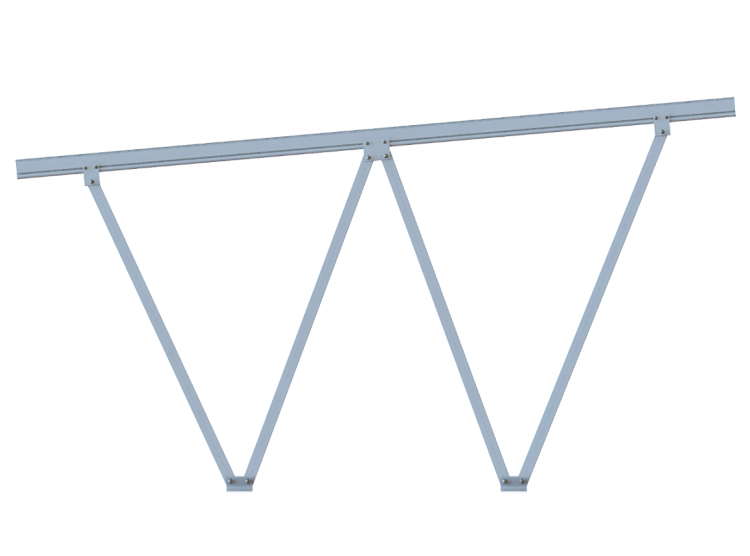Based on real user feedback and statistics, csus.edu no longer supports Microsoft’s Internet Explorer browser. Please upgrade your browser to improve your experience.
Sacramento State is becoming a little more sun-powered. Solar Parking Canopy Manufacturers

Solar panel arrays are being installed and soon will line the tops of Parking Structure 3 (PS 3) and Parking Structure 5 (PS 5).
The installation is the latest addition to Sac State’s renewable energy infrastructure, and part of a broader University effort to achieve full carbon neutrality by 2040, five years ahead of California’s 2045 deadline.
“(We) recognize and applaud the University’s efforts to expand its embrace of renewable energy sources,” said Maram Finnell, senior manager of marketing for SitelogIQ, the Sacramento-based energy company installing the panels. “By embracing renewable energy solutions like solar power, the University demonstrates its commitment to cost-effective and eco-friendly energy practices to reduce its carbon footprint.”
The installation adds 1,000 solar panels to the upper level of PS 3, near The WELL, and 1,886 panels to the top of PS 5, next to the Welcome Center. Combined, they will generate nearly 2 million kilowatt hours (kWh) of renewable energy per year, which will then be added to the University’s grid for distribution across campus.
The new panels are in addition to 3,979 in Lot 10, south of Hornet Stadium, which were installed in 2021 and generate 2.25 million kWh for the campus annually.
Sac State Director of Energy and Sustainability Ryan Todd estimates that when the new installation is completed renewable energy will make up about 20% of Sac State’s total energy use during much of the year and up to 30% over the summer, when solar energy is at its highest production.
“It dramatically reduces our greenhouse gas emissions immediately,” he said.
Construction is expected to wrap up by the start of the fall semester, with additional wiring work continuing into the academic year.
University officials scheduled the installation during the summer to minimize its impact on parking, said Jeff Dierking, director of University Transportation and Parking Services (UTAPS).
“The effect of the project on parking should be much less during the summer build period because we don't have the demand at that time,” he said.
The $6.8 million panel-array project comes at minimal upfront cost to Sacramento State.
“It dramatically reduces our greenhouse gas emissions immediately." Ryan Todd, Sac State director of Energy and Sustainability
The University has a 30-year power purchase agreement, meaning it has agreed to pay for the renewable energy generated by the panels at a fixed rate for the next three decades in exchange for installation and maintenance of the panels, Todd said.
“To have a fixed rate on a portion of our energy use for 30 years is huge,” he said. “It helps with forecasting; we know exactly how much we’re going to spend on that portion of our energy.”
The project also reduces the amount of power Sac State pulls from the electrical grid, leaving more energy available for local homes and businesses.
“That is a huge benefit because now (SMUD) doesn’t have to allocate that to us, which reduces the likelihood of blackouts in the local area because we’re such a heavy energy user,” Todd said.
There are several reasons the two structures were chosen for the panel arrays, Todd said. For one, when PS 5 was built, it was designed to be solar ready.
“We knew we would add solar to that structure later on, so some of the infrastructure was already there,” he said.
Parking lot installation is also preferable to installation atop campus buildings, he said, which causes extra work and hassle when roof repairs are needed.
“When we replaced the roof of the library a few years back, the solar array had to be uninstalled and then reinstalled in order to allow the new roof to be installed,” he said.
A less significant, but perhaps a more directly noticeable, benefit? Added shade on the upper levels of the two parking structures, Dierking said.
Solar panels are just one part of Sac State’s efforts to reach full carbon neutrality.
This summer, the University will finish a project to replace 5,000 inefficient incandescent bulbs in the Library with a third fewer LED bulbs, saving an estimated $100,000. The campus will do similar lighting retrofits in Riverside Hall, Solano Hall, Capistrano Hall, Sacramento Hall, Lassen Hall, and others.
These projects are funded through a $7 million allocation from the Chancellor’s Office and are expected to save 4.6 million kWh and more than $400,000 annually.
The University has also recently installed hundreds of composting bins around campus.
To learn more about Sac State’s sustainability efforts, visit the Sustainability office website.
Daniel Wilson joined the Sac State communications team in 2022 as a writer and editor. He previously worked at the Sacramento Bee as an audience engagement producer and reporter. He graduated from Sac State with a bachelor’s degree in Journalism in 2018. He plays video games, watches pro wrestling, and loves spending time with his wife and cat.
Contact University Communications (916) 217-8366 communications@csus.edu

Solar Carport Mounting System Get the Sac State story right in your inbox by subscribing to our newsletter, The Sacramento State Leader